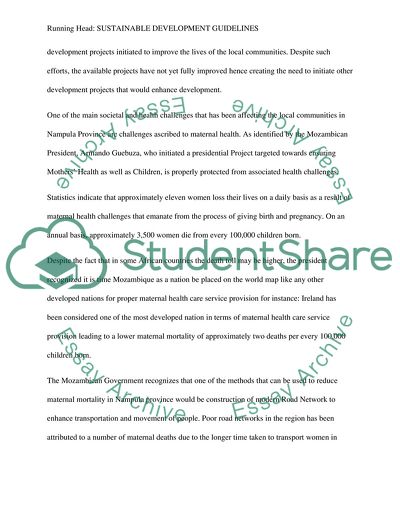Cite this document
(Sustainable Guidelines for Road, Education and Health Infrastructure Assignment - 2, n.d.)
Sustainable Guidelines for Road, Education and Health Infrastructure Assignment - 2. https://studentshare.org/environmental-studies/1799915-sustainable-guidelines-for-road-education-and-health-infrastructure-developments-in-mozambique-on-behalf-of-a-foreign-private-company
Sustainable Guidelines for Road, Education and Health Infrastructure Assignment - 2. https://studentshare.org/environmental-studies/1799915-sustainable-guidelines-for-road-education-and-health-infrastructure-developments-in-mozambique-on-behalf-of-a-foreign-private-company
(Sustainable Guidelines for Road, Education and Health Infrastructure Assignment - 2)
Sustainable Guidelines for Road, Education and Health Infrastructure Assignment - 2. https://studentshare.org/environmental-studies/1799915-sustainable-guidelines-for-road-education-and-health-infrastructure-developments-in-mozambique-on-behalf-of-a-foreign-private-company.
Sustainable Guidelines for Road, Education and Health Infrastructure Assignment - 2. https://studentshare.org/environmental-studies/1799915-sustainable-guidelines-for-road-education-and-health-infrastructure-developments-in-mozambique-on-behalf-of-a-foreign-private-company.
“Sustainable Guidelines for Road, Education and Health Infrastructure Assignment - 2”. https://studentshare.org/environmental-studies/1799915-sustainable-guidelines-for-road-education-and-health-infrastructure-developments-in-mozambique-on-behalf-of-a-foreign-private-company.


